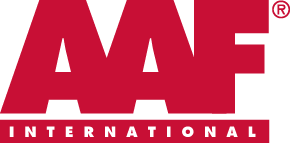Sustainable Design
Air filtration is a major component of sustainable design, which is both cost-efficient and resource-saving. 78% of Americans agree that corporations have a responsibility to adopt green standards like clean air. In addition, green buildings use on average 26% less energy, emit 33% less carbon dioxide, use 30% less indoor water, and send 50%-75% less solid waste to landfills and incinerators. Thinking green is a great way to maintain energy efficiency, minimize costly downtime, and extend the lifespan of your equipment.
Addressing Environmental Issues
While it is often assumed that outdoor air is more polluted than indoor air, the fact is that poor Indoor Air Quality (IAQ) ranks as one of the top five environmental risks to public health. Poor IAQ in buildings can lead to allergic reactions, aggravation of respiratory conditions, asthma attacks, eye irritation, coughing, irritability, and the inability to concentrate. The air inside your building can contain:
- Molds, spores, pollens
- Carbon monoxide, radon, Volatile Organic Compounds (VOCs)
- Bacteria, viruses, and byproducts
- Vehicle engine exhaust, exhaust from industrial plants
- Asbestos, clays, elemental particles, and man-made fibers
Between respiratory illness, allergies, and asthma, along with increased worker comfort, experts estimate that improved indoor air quality would produce an annual U.S. savings of up to $235 billion. As a member of the U.S. Green Building Council (USGBC), AAF has joined with leaders from every sector of the building industry to promote buildings that are environmentally responsible and sustainable, profitable, and healthy places to live and work.
Social Responsibility
Social responsibility comes down to optimizing air quality while choosing products that minimize total life cycle costs, including energy consumption and the amount of landfill waste by changing filters too frequently. AAF is committed to identifying further opportunities to prevent pollution, reduce waste, and conserve our natural resources. We pride ourselves on taking a collaborative and consultative approach to help our customers optimize performance and lower their total cost of ownership, all while taking the well-being of our planet into consideration at all times.
Optimized Air Filtration Strategies Improve Sustainability
A thorough air filter audit of your HVAC Systems is the first step that AAF takes, in order to provide you professional guidance and analysis for cost savings and liability reduction. By conducting this audit, we strive to understand your current state and your complete air filtration needs, applications, and goals for total air quality. This customized air filtration survey costs you nothing and could give you significant benefits by helping you save money, reduce risk, and save time.
AAF can also assist you in the processes required to earn Leadership in Energy and Environmental Design (LEED®) credits and become more sustainable. The LEED Green Building Rating System, administered by the U.S. Green Building Council, is the nationally accepted benchmark for designing and sustaining green buildings. Optimized air filtration strategies contribute to four of six LEED credit categories:
- Energy and Atmosphere (Efficiency)
- Indoor Environmental Quality
- Materials and Resources
- Innovation in Design/Operations
AAF’s expertise in airborne particulate and gaseous filtration systems, combined with our innovative product line, uniquely qualifies us to assist you throughout the LEED accreditation process.

